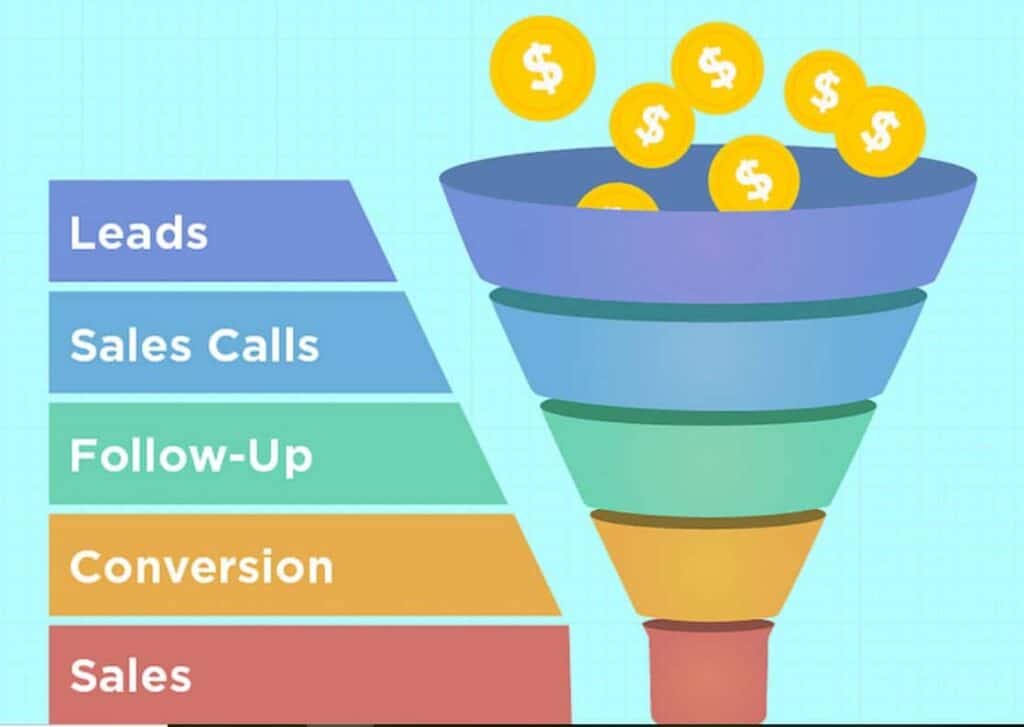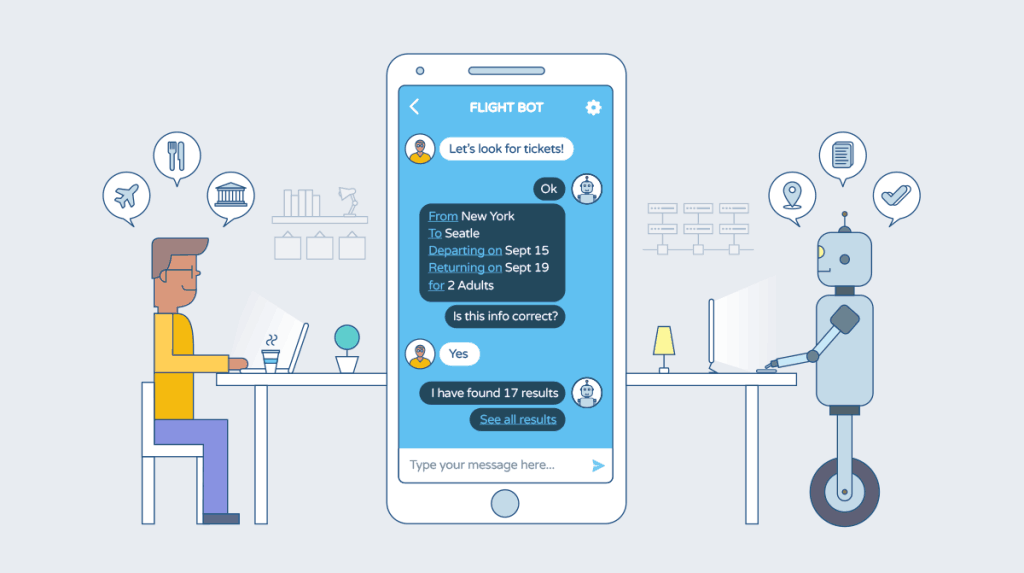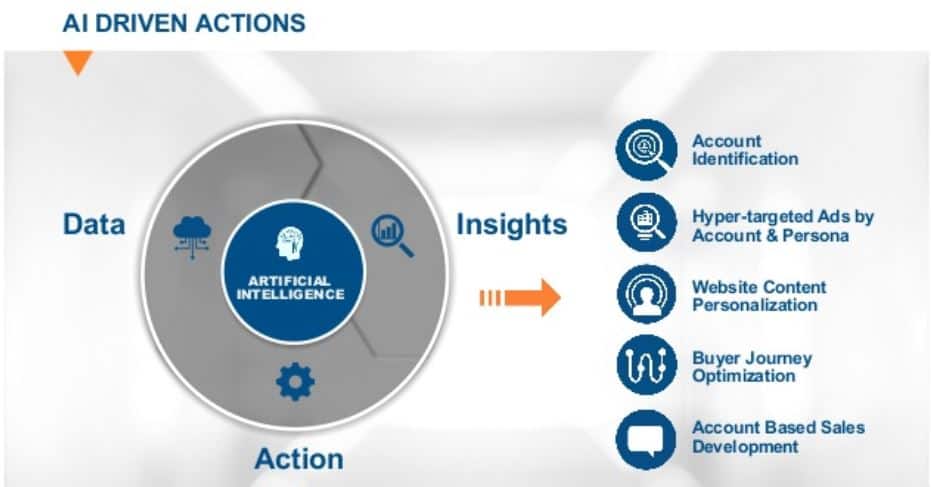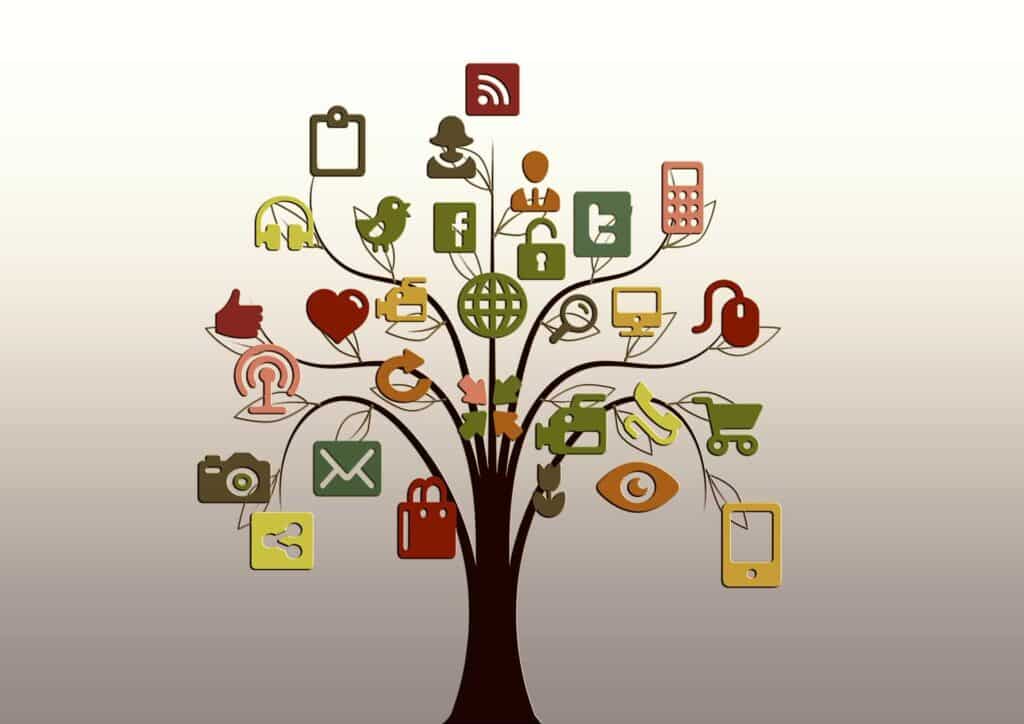Automation has been the harbinger of the modern era of marketing. Even more remarkable is the fact of how automation has changed marketing itself.
When marketing married technology, it changed the way we do marketing. We can feel the effect of automation at every stage of the customer’s journey through the marketing funnel.
Technically, marketing automation software is any software that lets you automate any tedious manual tasks. However, there are several sub-categories.
Social media helps inform the customer and marketing automation combined with email marketing helps educate the customer.
Marketing automation also helps determine the stage when a lead/customer is ready to buy. Then email marketing again works its magic by delivering emails that give leads the exact information they need to make their purchase decision.
Once the Marketing team qualifies a lead, you can hand him over to the Sales team. They will use CRM to carry out the sales process.

So, marketing automation and email marketing help us grow our online business. Modern marketing automation tools combine both functionalities into a single software.
Automation software helps you make your marketing more efficient and reliable in the short-term. We can see its snowballing effect in the long run as more customers buy from you at higher prices. It ultimately helps grow your company’s bottom line.
Table of Contents
When and how to use marketing automation
Simply speaking, marketing automation is much more than automating routine manual tasks. It adds intrinsic value to your marketing, making it simpler and faster.
It’s almost a radically new way of doing marketing. All online businesses today are using some form of marketing automation.
Gone are the days of CRM where you had to buy several tools from multiple vendors and integrate them. Now to have access to all these advantages of marketing automation, we can buy an all-in-one software that goes beyond basic automation functionalities.
Some tools like EngageBay combine email marketing, marketing automation, and even CRM at extremely affordable prices. Engage Bay brings the power of enterprise marketing software to small businesses and startups.
If you have just bought a marketing tool, there’s always a desire to get the most out of your investment. In the case of automation tools for marketing, due diligence becomes even more crucial because they’re often expensive.
You may also want to learn the various benefits of marketing automation software (besides just the basic automation). In this section, we will discuss different ways to use marketing automation software to add value to your customers’ lives.
Using product and content recommendation engine in an e-commerce store
Ever wondered what makes Amazon and Netflix so successful? They personalize their experience for every user.
They use recommendation engines (REs) to do that. These REs combine personalization rules and data to serve personalized recommendations to users in a given context. These are external tools that will need to be integrated with your software.
Studies have shown that over 70% of the modern user base expects their experience to be personalized. They come to your store with an expectation that you will already know them well. They will come to buy something they know they want. They would also be expecting you to recommend new things based on their past purchases.
Most readers of this article would have used Amazon at some point in their lives. We all know how recommendation engines help us have a great time shopping on Amazon. We see this boost in customer experience every day.
Not just that, improved customer experience leads to better CTR, higher conversions, and higher revenue. They’re the key behind why some online stores do so well, while others shut stop in less than a year.
You can also add an RE for “similar content” recommendations on your site and get the visitor to stay a bit longer. Similarly, you can also hook up an RE to your email marketing system on your site to unlock higher click-through rates.
While they work in e-commerce, they can be applied to any items of high value to the customer. You can use it for personalized content recommendations too.

Personalize automated emails
Personalization acquires a very important role in email marketing because the subject line and sender name are the only two indications of the quality of an email before it is opened.
We saw in our email personalization guide that simply segmenting your email list wasn’t enough. Segmentation does make your email content relevant, it still has to be made interesting.
Your content must (in an ideal situation) solve a peculiar problem for the customer.
The engagement with this relevant content depends on how much the readers trust you and your content.
This may not be instantly possible but over time, as trust grows, the opens and click-through rates start rising. The stronger this relationship, the more your leads are going to convert into customers.
If you want to achieve that kind of relationship with your leads, you must focus on breaking their psychological barriers and connect with them on a personal level.
Email sequences are the easiest and the most effective ways to nurture your leads into customers. Personalization injects the “soul” back into these automated follow-ups and autoresponders.
You can implement personalization in the email subject line or the email body. Some email marketing automation systems also provide conditional text that changes according to the value of a selected customer attribute. Some of the different ways to personalize an email are:
- Contact’s first and last names
- Their subscription date
- Their location and the weather on their location
- Their ethnic identity
- Age
- Gender
Use lead scoring to recommend the highest value customers
MarketingSherpa’s B2B Benchmark study concludes that 73% of B2B sales leads are not sales-ready. They are often wrongly qualified.
When a lead enters your marketing system, it cannot be directly passed to the Sales team. A lead qualification process is established to decide criteria based on which a lead becomes a “marketing-qualified lead”.
Modern marketing automation systems give it a number; it’s called the Lead Score. This score determines whether the lead is ready for a sale or if it needs to nurtured further through different media. Sometimes a lead may also be disqualified if there’s no buying intent or the lead has a lower budget.
Lead scoring is based on implicit as well as explicit factors.
Implicit lead scoring indicators are those indirect signals that have to be measured and derived. These include overall website activity – the clicks, the shares, and the downloads. Email engagement (open and click-through) rates are also important metrics for lead scoring.
Explicit lead scoring factors are voluntarily given by the lead or collected by the system through a form on the website. Some of these lead scoring factors are needs, authority, budget, and timeline.
Without the insights of lead scoring, you could potentially lose these customers. With lead scoring, you know how important the customer is and you can help him or her at the right time.
Send triggered emails to personalize and humanize the customer’s journey
When you send an email based on an action taken by the user on your website, it’s called a triggered email.
Triggers may be based on the user’s action. Negative triggers can also be based on a lack of user’s action. A change in the customer’s buying persona can also send a trigger email.
Some common triggers include:
- Account change updates (when the password or other important details are updated)
- Milestone updates
- Real-time events (for example, a flight delay notification in case bad weather is detected)
To the uninitiated outsider, these may seem less important because the content inside them usually remains constant. There’s not much scope of personalization either.
However, triggers are extremely important in keeping communication with the user going. Even though many of the triggered emails are automated, they act as “conversation enders”. They assure the users that everything is okay.
Some of these triggered emails (birthdays, anniversaries, and special discounts) also elevate the experience by making the customer feel especially valued.
Remind them of abandoned carts
Abandoned cart reminders are also a type of triggered emails. They give the customers a small nudge to bring them back on the site and complete the transaction.
While these act as reminders, they can also be used in a few innovative ways. If a user has left a discounted product in the cart, remind him when the deal is about to end.
You can send an email to all users who have low-stock products in their carts. When only a few copies of the product are left, send an email reminding everyone that this product will soon go out of stock.
The more common way to persuade the customer to empty the abandoned cart is by giving them a discount or free shipping coupon.

Remind them of products on multiple channels (remarketing)
Don’t think that you lost a customer when a visitor returns without purchasing. There are many ways to retarget that customer. You just need to know his email address. This is called Remarketing.
We know that very few customers will buy from you in the first ad. To capture more customers, you need to have 5 to 8 touchpoints with them. So, if they’re not buying from you from the first ad, show them ads again for a few more times.
Because the customer is already aware of your brand and its offerings, their visit (without purchase) is still a strong purchase signal. When such a customer leaves the site, it may be perceived in two ways. His purchase path may have changed (i.e. he doesn’t want to buy that product anymore). He may also be going slower on his purchase path; one (or more) strong reminders could expedite him towards the purchase.
In a lot of ways, Remarketing is quite similar to paid ads. The difference is how we target and choose who sees our ad. Facebook and Google are the two major advertising platforms.
Paid ads on Google Adwords are based on keywords you choose to target. With Facebook, we have targeting criteria for Facebook ads. Retargeting works differently on both of them.
Adwords requires you to install a code on your website. You can get this code in your Adwords or Google Analytics account. The code writes tracking data into a cookie on the client’s computer. When he leaves your site without purchasing anything, a similar code on other sites displaying Google ads will read this cookie. It will then show ads based on the tracking data contained in the cookie. This offers ad personalization as well as serves to remarket products to leads and customers.
Facebook uses an “ad pixel” for this purpose. Its role is similar to the Google Adwords code. You need to copy the pixel code from your Facebook ads account and install it on your website.
If the user is logged in to his Facebook account, the pixel code captures his email address. The majority of Facebook users are already logged in to Facebook on their computers or their mobiles. This increases the effectiveness of the pixel.
These email addresses can then be used to serve remarketing ads across Facebook and Instagram.
Facebook and Instagram ads are often more effective than Google ads for some B2C brands. These platforms allow us to serve multimedia ads across user feed, stories, sidebars, groups, and a few other avenues.
Send transactional emails
When a customer is buying something on his card or by cash in a store, he gets an instant receipt. This is the shopping experience of a physical store.
Online stores can take inspiration from this physical shopping experience. They can send emails as receipts for transactions.
These emails apply on many levels beyond just the transaction confirmation email. You can serve birthday reminders, event participation reminders, and monthly payment reminders (if applicable).
Send milestone emails
Every customer has a different path after buying something from you the first time. They would buy more if they already bought something from you.
As he goes through buying stages, you could remind him of the amount of shopping he has done. A simple email showing them how long they have been your customer may also work here.
This way we are reminding them of the strong relationship with the brand. Why not give them a discount for their loyalty?
These milestone reminders act as “positive reinforcement” in the customer-brand relationship. They strengthen this relationship by telling the customers that you care for them.
Help them identify their problem in the early stages
When the lead is new to your email list, they have expressed explicit interest in your brand. They already saw your content on Facebook, YouTube, or other sites and they loved it. They want more.
In short, these leads are ripe to be nurtured to become your customers. Some of them like reading your content or watching your videos. They are still unaware of the exact problems that you can help them solve. They don’t know how to use your products or services in their lives.
For such leads, you can use email sequences to send “problem discovery” (i.e. early funnel stage) content.
👉Unleash the power of automation for your eCommerce store! Discover 7 proven strategies and tools right here.
Email marketing automation can also help solve their problems through email sequences
For leads further along in their research process, you could send them product information content through these email sequences.
Since they know their problems, you would also know their problem if you track their website activity. Help them solve these problems by sending them appropriate and adequate content through email sequences.
To start implementing email sequences with EngageBay, check out our lead nurturing page.
Use chatbots live and sales chat to help solve initial queries
Automated bots are software engines that help answer basic and complex user queries instead of a live sales agent. Power them with the help of artificial intelligence (AI) and you have today’s modern chatbots being used by enterprises.
Bots were used for many users. After giants like Amazon, Apple, and Facebook started using them, AI bots became mainstream.
They can serve consumers looking to research further about the brand and its offerings. You can use such a bot in various ways:
- A chatbot can deliver standardized welcome messages and inform the customers about operational hours. This would be a lot like the Welcome campaign we talked about in our lead nurturing
- You can also program a chatbot to answer basic queries with pre-fed answers. For any advanced queries, the chatbot can take the user’s email address along with the query and send it to a sales agent.
Adding a live sales agent to this chat is even more beneficial. You could use chatbots in combination with sales agents if you have a huge brand and expect a heavy inflow of queries. If the query volume is manageable with the help of sales agents alone, you won’t need any chatbot or AI-powered engine.
Some popular chatbot providers you may want to check out:
Some effective and popular live sales agent chat providers are:
Use marketing automation and AI to deliver more levels of personalization
It’s easy to get hooked up on the AI trend. Companies led by impulsive owners may end up buying more software than they need.
Implementing AI solutions helps, but without a plan of utilizing it efficiently, you may end up wasting a lot of money.
So start by first taking a stock of what your capabilities and your resources are. Define your customers’ marketing journey through your Marketing and Sales team. See where you are performing well and where you need help.
To best utilize AI for personalization, find gaps that can be bridged by AI.
Here are some ways to best use AI for personalization:
- Powerful customer behavior insights from website tracking data
- Serving content based on geography
- Optimizing content delivery based on user’s recorded or inferred preferences
- Delivering assistance to the customer based on your support manual with the help of AI chatbots.
- Sentiment monitoring and automated replying on social sites with the help of AI tools.
- Buying ads based on large-scale behavior analysis by AI tools
Ensure that your AI system has access to all the information it needs to create the best customer experience. An effective but lacking AI system may end up frustrating your potential customers.
AI-based personalization does have the power to create trust between your brand and the customers. A trusting business relationship translates to happier customers, higher conversions, and increased revenues.
Serve content to a global audience with 24×7 social scheduling
The first stage of the marketing funnel is Awareness. Social media management is the one manual task that can help push brand content globally to make customers aware. It’s where more than half of the world’s population exists. No better place to find your marketing congregations.
Can you imagine how inconvenient it would be if you had to hire people to share social updates round the clock?
Tools like SocialBee, Buffer, and HootSuite make it easy for marketers to do social media management right. You just have to type in your marketing message into the tool, give the tool an appropriate time, and forget about the update. It’s that simple; the tools take care of everything else for you.
In the second stage, the user is now aware of your brand. He actively looks for information to evaluate you against your competitors.
Wouldn’t it be easier if we knew what the customer wanted and then serve them the appropriate content at regular intervals? Marketing automation makes both these things easier.
With analytics, you gain insights into customer’s likings and his buying intention. Email marketing then lets you nurture these leads by sending targeted emails to each audience group. Without these tools, you would need to hire a large team to track and address each user individually. Marketing automation gets it done at a small fraction of the cost and in far less time.
When not to use marketing automation
We have seen several different ways in which marketing automation can help businesses. They’re a win-win marketing solution for customers and marketers.
Automation can’t replace human beings though. AI has not yet reached up to the level shown in Terminator movies. We have only just begun seeing talking robots.
No matter how competent machine algorithms get, humans will always have advantages in certain tasks.
For example, tools are used to implement marketing strategies, not create them. AI can help make customer experience decisively personal, it still can’t generate new marketing ideas.
You can’t have a fully automated customer journey. While chatbots do help supplement human sales agents, they can also feel extremely mechanical. They can create customer experiences that feel very robotic and boring. At some point, your leads would prefer to talk to a human being over chatbots.
Marketing automation doesn’t come cheap either. You should pay attention and conduct your due diligence for the tools you want to purchase. Otherwise, you will soon end up with automation costs that cannot be recovered from revenues.
Lastly, most marketing automation tools are complex software. You may not be able to start using them from the first day of purchase. There’s always a learning curve involved. For this purpose, always have a really thorough plan to evaluate each UI screen of the tools under consideration. The best time to do this your free trial period.
In Conclusion
While marketing automation is useful to businesses, its contribution to the customer journey should drive its use. There are several ways in which marketing automation helps improve the customer journey.
For customers in the awareness stage of the marketing funnel, effective marketing automation software will give you clean lead scores to help reduce sales-rejected leads.
Marketing automation software also provides various types of email campaigns to nurture leads into customers. Ecommerce automation can also help reduce revenue loss through cart abandonment reminders.
If a user has bought something, the store can suggest personalized product or content recommendations through specialized software engines.
Chatbots can also help improve the customer journey by providing a standardized interface to solve basic customer queries. Sales agent chats on your landing pages can help improve the human aspect of customer query resolution. Some brands like Amazon combine chatbots and sales agents to provide a superior customer experience.
As useful marketing automation is for the customer journey, certain aspects of it should remain in the hands of humans. They can help us implement marketing strategies, they can give us insights that help us direct our campaigns to improve conversion. The software cannot come up with its marketing strategies.
Awesome resources to learn more about marketing Automation:
- What Is Automated Email Marketing?
- Segmenting Your Audience Into Buckets
- How And When To Use Automated Email Templates
- The Importance of Email Personalization
- Tools And Platforms For Automated Email Marketing








